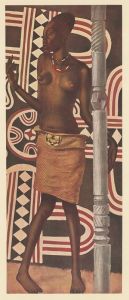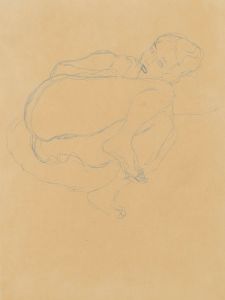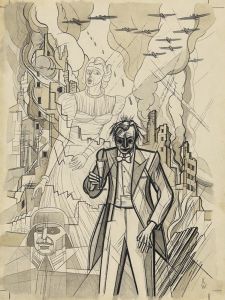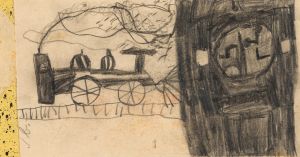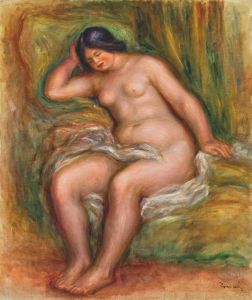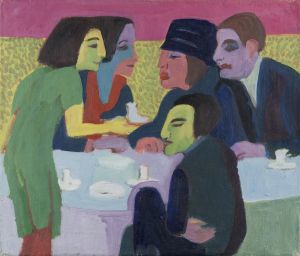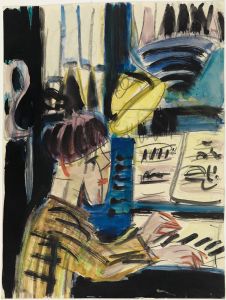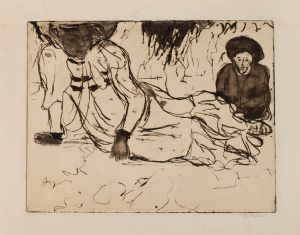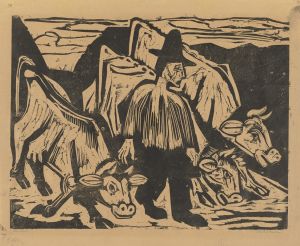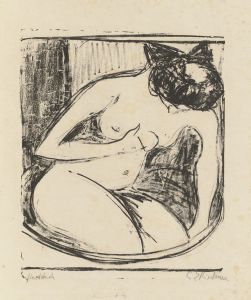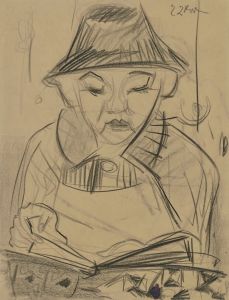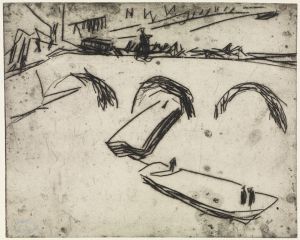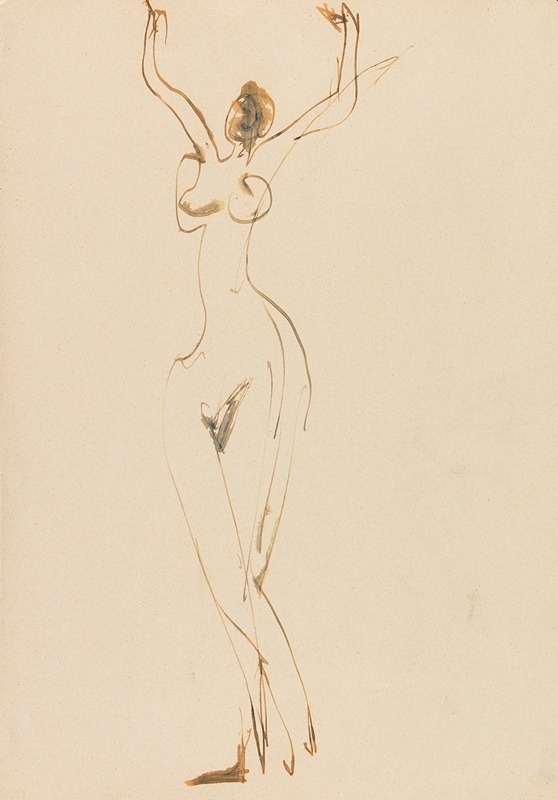
Tanzender weiblicher Akt im Atelier
A hand-painted replica of Ernst Ludwig Kirchner’s masterpiece Tanzender weiblicher Akt im Atelier, meticulously crafted by professional artists to capture the true essence of the original. Each piece is created with museum-quality canvas and rare mineral pigments, carefully painted by experienced artists with delicate brushstrokes and rich, layered colors to perfectly recreate the texture of the original artwork. Unlike machine-printed reproductions, this hand-painted version brings the painting to life, infused with the artist’s emotions and skill in every stroke. Whether for personal collection or home decoration, it instantly elevates the artistic atmosphere of any space.
"Tanzender weiblicher Akt im Atelier" (Dancing Female Nude in the Studio) is a painting by the German expressionist artist Ernst Ludwig Kirchner. Created in 1912, this work is a significant example of Kirchner's exploration of the human form and his interest in movement and dynamism, which are central themes in his oeuvre.
Ernst Ludwig Kirchner was a founding member of the artist group Die Brücke (The Bridge), which was established in Dresden in 1905. The group aimed to create a new style of art that would bridge the past and the future, and they were heavily influenced by non-Western art forms, as well as the works of Vincent van Gogh, Edvard Munch, and the Fauves. Kirchner and his contemporaries sought to express raw emotion and depict the human experience in a more direct and unfiltered manner.
"Tanzender weiblicher Akt im Atelier" exemplifies Kirchner's bold use of color and his dynamic, almost frenetic brushwork. The painting depicts a nude female figure dancing in an artist's studio, capturing a sense of movement and vitality. The figure's pose is both graceful and powerful, suggesting a liberation of the body and spirit. The background of the studio is rendered in vibrant, contrasting colors, which serve to highlight the figure and add to the overall sense of energy and movement in the composition.
Kirchner's work during this period was characterized by a departure from traditional academic techniques and a move towards a more expressive and abstract style. He often used exaggerated forms and intense colors to convey emotion and create a sense of immediacy. This painting is no exception, as it demonstrates his ability to convey the dynamism of the human form through his distinctive style.
The context in which "Tanzender weiblicher Akt im Atelier" was created is also significant. The early 20th century was a time of great social and cultural change in Europe, and artists like Kirchner were responding to these shifts in their work. The liberation of the human body and the exploration of new forms of expression were central to the avant-garde movements of the time. Kirchner's depiction of a dancing nude in a studio setting can be seen as a reflection of these broader cultural currents.
In addition to its artistic significance, the painting also holds historical importance. Kirchner's work was later condemned by the Nazi regime, which labeled it as "degenerate art." Many of his works were confiscated, and some were destroyed. Despite this, Kirchner's influence on modern art has endured, and his works are now celebrated for their innovative and expressive qualities.
"Tanzender weiblicher Akt im Atelier" is housed in the collection of the Brücke-Museum in Berlin, which is dedicated to the works of the Die Brücke artists. The museum holds a significant number of Kirchner's works, providing insight into his development as an artist and his contributions to the expressionist movement.
Overall, "Tanzender weiblicher Akt im Atelier" is a powerful example of Ernst Ludwig Kirchner's artistic vision and his ability to capture the essence of movement and emotion through his distinctive style.





